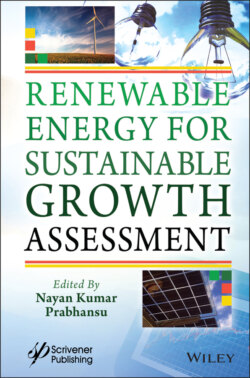Читать книгу Renewable Energy for Sustainable Growth Assessment - Группа авторов - Страница 71
3.1 Introduction
ОглавлениеBiomass becomes one of the alternative energy resources to meet the demand for fossil fuels all over the world. The most commonly used biomass for energy conversion includes freshwater and marine water micro and macroalgal biomass, agricultural and forest residues, industrial biomass, municipal waste, food waste, and sewage [1]. The Indian Ministry of New and Renewable Energy (MNRE), considering power generation from biomass efficiency, has promoted many biomass utilization programs through efficient technology. India is one of the leading countries that utilize nearly 30% of biomass as a primary energy resource. About 500 million metric tons of biomass per annum is available in India and the significant biomass contribution from agricultural and forestry residues with 120 to 150 million metric tons [2]. Globally, the distribution of energy output from renewable resources differs from the energy situation in India. Power generation in the world from hydro (62.95%) is higher than other resources, whereas, in the case of India, energy production from solar (68.33%) is higher (Figure 3.1) [3, 4]. India mostly generates energy from biomass like rice stalk, coir pith, sugarcane bagasse, and fruit waste. About 18,000 MW of power was generated from agriculture and forestry residues in India, whereas 7000 MW is from bagasse from sugar mills [2]. India has a high potential to generate electricity from renewable resources (Figure 3.1).
Figure 3.1 (a) Global status of renewable energy distribution from renewable and waste resources in 2020 [3]; (b) Distribution of Renewable energy in India in 2020 [4].
Biomass conversion into energy causes greenhouse emissions as fossil fuels, deforestation, pollution, and water shortage. To prevent this impact, scientists are concerned about developing efficient technology for eco-friendly conversion. Biomass is considered a carbon-neutral renewable source, releases atmospheric CO2 on the combustion that can be further utilized by plants, trees, crops, and aquatic plants (micro and macroalgae) photosynthesis process. Biomass conversion provides occupation to rural individuals. In this chapter, the biomass impact on the environment and its efficient conversion were reviewed and compiled. An overall review of the emerging trends for biomass conversion was designed using BioRender.com and presented in a flowchart (Figure 3.2).
